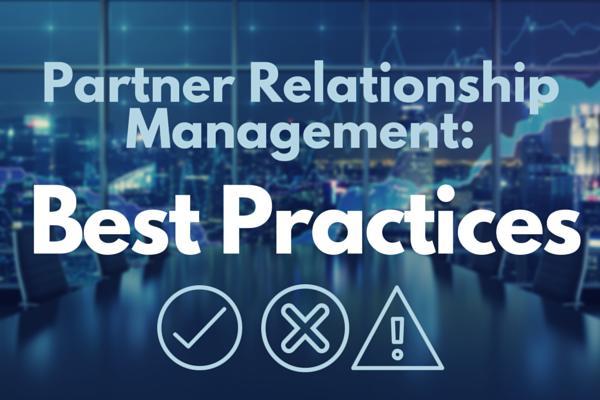In our years working with vendors to create effective channel partnerships, we've identified several key phases which just about any vendor will pass through at one point or another. Three of these are good, the other indicates areas of concern.
If you're looking for best practices at various stages of your own channel development, this is a good place to start.
I. Emerging Growth
The "Emerging Growth" phase includes companies that are focused on building out a channel program, and need to recruit and onboard these partners successful.
A company in the Emerging Growth Phase is going to be very busy focusing on making sure they have the proper plans and procedures in place. This should also include the very important task of developing an ideal partner profile.
Other elements to this phase will include:
- Signing up first partners and getting them ready to sell.
- Writing guidelines for partner interaction, specifying the roles of each party.
- Creating marketing materials, to help partners generate leads.
- Deploying the first training materials, whether online or in-person.
- Selecting a Channel Manager. This should not be a delegated task, but will be a full-time job in need of a full-time Manager.
- Initial purchase and implementation of software support for their ecosystem. Smart investments now will prevent bigger problems later.
- Developing outreach strategies targeting partner prospects.
- Drawing up plans for further expansion, such as which major markets to tackle and in what order.
The Emerging Growth phase lays the foundation for the rest of the venture. Leave plenty of room for planning and strategizing. No amount of forethought is too much, and the better you plan, the more smoothly future phases will go.
READ MORE: Channel Lifecycles - Best Practices for Every Stage of Channel Development
II. Scaling
Once basic channel management processes are in place, sales are sustainable, and the company needs to increase revenue through the channel, we're into Phase II: Scaling.
This will likely include:
- Expanding the Channel Management group with more staff handling the recruitment and onboarding aspects.
- Expand the use of technology, particularly into areas of automation. If training isn't online yet, it should be soon. This is where PRM typically comes into play.
- Centralizing content storage and continuing to build a media library for partners to draw upon.
- Implementing partner surveys or other feedback systems to better address their needs.
- Starting a Market Development Fund to increase resources available to partners.
- Reducing channel conflict, needlessly overlapping coverage areas, and streamlining sales processes.
- Looking for global partners and developing plans to recruit them.
- Establishing guidelines to eliminate under-performing partners.
The biggest danger a company faces during Phase II is scaling up too quickly. If they begin bringing on too many partners that don't fit their ideal partner profile - or simply don't have the resources in place to support the right partners - a channel program can quickly begin to under-perform expectations.
III. Continuous Improvement
To a certain extent, the Scaling Phase never entirely ends, at least as long as a company strives for growth. However, a company will undoubtedly reach plateau points where significant increases in capacity would require major new investments or expansions the company isn't prepared for yet.
Then the focus moves to keeping things sustainable, and seeking optimizations within the system to increase revenues without pushing sales beyond capacity.
This may include:
- Concentrating on new product roll-outs and/or improvements on existing products.
- Fully centralizing their software systems, if they haven't already.
- Increasing aftermarket support, post-sale upgrade initiatives, and other long-tailed profit makers.
- Working with partners to optimize their own workflows.
- Greater promotion and awareness-building, such as major trade show presentations.
And Continuous Improvement, of course, never ends. A company can always be better-optimized and finding new avenues of outreach. Plus, inevitable shifts in the market will undoubtedly require new responses.
The Phase You Don't Want To Be In
And then there's the "fourth" phase, so to speak, which a company may slip into at any point if things aren't going so well:
IV. Sub-Optimized
Anything standing in the way of a company or their sales partners making sales figures and improving outreach is ultimately sub-optimized.
Common warning signs include:
- Partner difficulties from have to work with too many software solutions.
- Unclear or unreliable lines of communication.
- Partner-level management issues, such as failing to identify and deal with under-performing sales staff.
- Complaints about a lack of support from partners.
- Frequent customer complaints regarding the product or support.
- Too-rapid expansion without sufficient personnel or software resources to cope.
- Internal issues, such as a lack of contact between Channel Managers and other key departments like marketing or R&D.
In any case, it's important for the company to take a step back, re-evaluate their business plans, and look to optimize their systems. Don't attempt further growth until the situation is stabilized.
For further assistance, Logic Bay has both the expertise and the superior software platform to make indirect sales work for your company. Contact us for a free demo.

